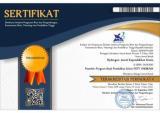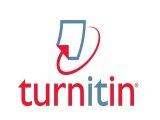Pengaruh Model PBL Berbasis Etnosains Terhadap Kemampuan Berpikir Kreatif Siswa Pada Materi Hidrolisis Garam
Abstract
The purpose of this study is to see how the ethnoscience-based PBL model affects students' creative thinking skills on salt hydrolysis material ataAl-Falah iIslamic HighhsSchool iin jJambi.aResearchhdesign used in this study is Quasi Experiment with Non Equivalent Control Group Design. There were two sample classes in this study: class XI IPA 1 as an experimental class using an ethnoscience-based PBL model and class XI IPA 3 as a control class using a PBL model. This study's instrument included an essay test, an observation sheet for student activities on model application, and an observation sheet for creative thinking skills. The t-test was used to test hypotheses about differences in students' creative thinking abilities. The data analysis revealed that the ethnoscience-based PBL model had an impact on students' creative thinkingabilities, as evidenced by an increase in the average results of the pretest and posttest, namely 52.27% - 71.59% with a difference of 19.29% in the experimental class. control 50.76% - 63.64% with a 12.88% difference Furthermore, theree is assignificantddifferencebbetween the experimental and control groups. According to the results of the t test with a significance level of = 5%, tcount = 1.76797 > ttable = 1.6819, indicating that the ethnoscience-based PBL model has an effect on sstudents' creativetthinking abilities. As a result, it is possibleeto concludeetthat theeethnoscience-based PBL model influences students' creative thinking abilities.
Full Text:
PDFDOI: https://doi.org/10.33394/hjkk.v10i2.5723
Refbacks
- There are currently no refbacks.

This work is licensed under a Creative Commons Attribution-ShareAlike 4.0 International License.





